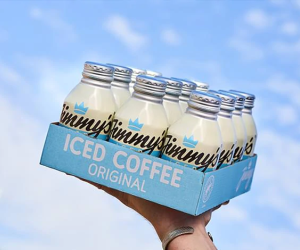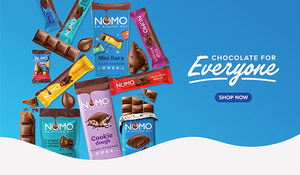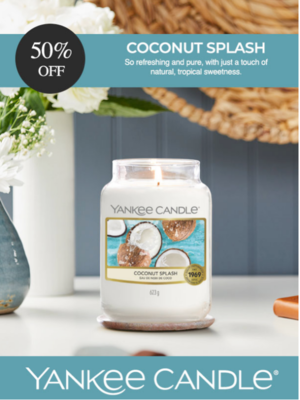Make homemade Sangria Ice Cream with all the favourite ingredients – wine, citrus, and berries. Learn tips for creating this delicious Spanish-inspired homemade ice cream.
Sangria, famously known for its vibrant, fruit-filled wine flavours, is a drink synonymous with summer and relaxation. The refreshing mix of wine, citrus, and berries has made it a favourite around the world.
Inspired by these classic flavours, we’ve transformed this beloved Spanish drink into a deliciously fruity ice cream that captures the essence of Sangria in a creamy, frozen treat.
In this article, we’ll guide you through our step-by-step recipe and methods for creating Sangria Ice Cream at home, while also delving into the rich history and origins of Sangria, exploring its evolution from a traditional Spanish beverage to a globally cherished drink.
Introduction to Sangria and Its Spanish Roots
Sangria, derived from the Spanish word “sangre” (blood), is a vibrant wine-based punch with a rich history rooted in Spain. Originally created to purify water and add flavour, Sangria evolved from a simple blend of wine, water, and spices during the Roman era to a beloved Spanish staple by the 18th century.
 The drink flourished in Spain, particularly in Andalusia, with each region developing its own twist. Classic red Sangria, made with red wine, citrus, and stone fruits, became the most recognizable version. However, variations like Sangria Blanca (white wine) and Cava Sangria (sparkling wine) also gained popularity.
The drink flourished in Spain, particularly in Andalusia, with each region developing its own twist. Classic red Sangria, made with red wine, citrus, and stone fruits, became the most recognizable version. However, variations like Sangria Blanca (white wine) and Cava Sangria (sparkling wine) also gained popularity.
Sangria’s global fame skyrocketed after its introduction at the 1964 World’s Fair in New York City. Its refreshing taste and adaptability quickly captured international audiences, inspiring countless variations worldwide
Transforming Sangria into Ice Cream
Creating Sangria ice cream involves carefully adapting the drink’s signature components—wine, citrus fruits, and berries—into a frozen dessert with great care being taken to ensure you maintain this classic drink’s vibrant core wine flavours, whilst adding a new creamy textural element.
To achieve this, red wine (often Tempranillo or Garnacha) is reduced to concentrate its flavours and remove some alcohol content. This reduction is then combined with a creamy ice cream base, allowing the rich, slightly tart wine flavours to shine through.
Fresh citrus fruits like oranges and lemons provide the characteristic tanginess, while berries such as strawberries, raspberries, and blueberries add texture and natural sweetness. The key is balancing these flavours so that each component comes through in every bite, creating a complex and enjoyable dessert that truly represents the spirit of Sangria1.
Achieving this balance requires experimenting with proportions and tasting throughout the process. The goal is to create an ice cream where the wine flavour is prominent but not overpowering, the citrus adds a refreshing zing, and the berries provide a sweet, fruity flavour – all blending together to deliver a dessert that truly represents the spirit of Sangria.
Choosing the Right Wine for Your Sangria Ice Cream
Selecting the right wine is crucial for capturing the authentic taste of Sangria in your ice cream. Look for fruit-forward red wines with moderate tannins and acidity, as these characteristics blend well with other ingredients.
Two classic Spanish wines ideal for Sangria ice cream are:
- Tempranillo: Offers a robust flavour profile with dark fruit notes, earthy undertones, and a hint of spice. Its subtle tannins and moderate acidity complement the creaminess of the ice cream base.
- Garnacha (Grenache): Provides a lighter, fruitier option with bright red fruit flavours and a hint of spice. Its lower tannin content and vibrant acidity make it versatile and easy to blend with the creamy texture.

To achieve an authentic Sangria flavour, reduce the wine slightly to concentrate flavours and remove excess alcohol. Complement it with fresh citrus fruits and berries, and consider adding a touch of spice like cinnamon or a splash of brandy for an extra layer of authenticity
 Next, complement the wine with fresh citrus fruits such as oranges and lemons, and add berries like strawberries, raspberries, and blueberries to replicate the fruity complexity of Sangria.
Next, complement the wine with fresh citrus fruits such as oranges and lemons, and add berries like strawberries, raspberries, and blueberries to replicate the fruity complexity of Sangria.
A touch of sweetness from sugar or honey helps balance the wine’s acidity and brings all the elements together.
For an added layer of authenticity, consider incorporating a hint of spice, such as a dash of cinnamon or a splash of brandy, to elevate the flavour profile and give the ice cream a true Sangria essence.
By carefully selecting the right wine and balancing it with complementary ingredients, you can create a Sangria Ice Cream that is both refreshing and indulgent, capturing the spirit of Spain in every bite.
Homemade Sangria Ice Cream Recipe
Now that you understand the importance of balancing the flavours and choosing the right wines, and accompaniments, here’s our recipe and method to create a delicious homemade sangria ice cream:
 Ingredients:
Ingredients:
For the Wine Reduction:
- 250 ml red wine (Tempranillo or Garnacha recommended)
- 2 tbsp caster sugar
- 1 tbsp brandy (optional, for added depth)
For the Ice Cream Base:
- 300 ml whole milk
- 200 ml double cream
- 100 g caster sugar
- 4 large egg yolks
- Zest of 1 orange
- Zest of 1 lemon
- 150 g mixed berries (strawberries, raspberries, blueberries)
- 1 tsp cinnamon (optional, for a hint of spice)
- Juice of 1 orange
- Juice of 1/2 lemon
For the Garnish (Optional):
- Fresh mint leaves
- Extra berries for serving
Method:
- Prepare the Wine Reduction:
- In a medium saucepan, pour in the red wine and add the caster sugar. Stir to dissolve the sugar over medium heat.
- Bring the mixture to a gentle simmer and allow it to reduce by half (approximately 125 ml), which should take around 10–15 minutes. This concentrates the wine’s flavours and reduces the alcohol content. If using brandy, add it in the last few minutes of simmering.
- Remove from heat and allow the wine reduction to cool to room temperature. Once cooled, refrigerate until needed.
- Make the Ice Cream Base:
- In a separate saucepan, heat the milk, double cream, and half of the caster sugar over medium heat. Stir occasionally until the mixture is hot but not boiling (just below the simmering point).
- In a medium bowl, whisk together the egg yolks and the remaining caster sugar until the mixture is pale and creamy.
- Gradually pour the hot milk and cream mixture into the egg yolks, whisking constantly to temper the eggs and prevent them from curdling.
- Return the combined mixture to the saucepan and cook gently over low heat, stirring continuously with a wooden spoon until the custard thickens slightly and coats the back of the spoon. Do not allow it to boil. This should take about 5–7 minutes.
- Once thickened, remove from the heat and stir in the orange and lemon zest, orange juice, lemon juice, and cinnamon (if using). Allow the custard to cool to room temperature, then chill in the refrigerator for at least 1 hour.
- Combine the Wine Reduction and Ice Cream Base:
- Once both the wine reduction and the custard base are thoroughly chilled, mix them together. If you prefer a smoother consistency, you can blend them briefly with a hand blender to ensure an even distribution of flavours.
- Fold in the mixed berries gently, ensuring they are well distributed throughout the mixture.
- Churn the Ice Cream:
- Pour the mixture into an ice cream maker and churn according to the manufacturer’s instructions, usually around 20–30 minutes, until the ice cream reaches a soft-serve consistency.
- If you do not have an ice cream maker, pour the mixture into a lidded, freezer-safe container and freeze. Every 30 minutes, remove from the freezer and stir vigorously with a fork or whisk to break up ice crystals. Repeat this process for 2–3 hours until the ice cream is smooth and creamy. See our article – How to Make Homemade Ice Cream Without an Ice Cream Maker
- Freeze and Serve:
- Transfer the churned ice cream to a lidded container and freeze for at least 4 hours, or until firm.
- Before serving, allow the ice cream to soften at room temperature for about 5 minutes. Scoop into bowls or cones, and garnish with fresh mint leaves and extra berries if desired.
Tips for Best Results:
- For an extra burst of wine flavour, drizzle some leftover wine reduction over the scoops before serving.
- Ensure all ingredients, especially the wine reduction and custard base, are thoroughly chilled before churning. This helps achieve a better texture and smoother consistency.
Enjoy your refreshing and indulgent Homemade Sangria Ice Cream – a perfect dessert to bring a taste of Spanish summer to your table!
The Perfect Pairing: Complementary Ingredients
To elevate your Sangria ice cream, carefully select complementary ingredients:
- Fruits: Citrus fruits (oranges, lemons) add tanginess, while berries provide natural sweetness and colour.
- Spices: A hint of cinnamon adds warmth; nutmeg or cloves can offer a unique twist.
- Herbs: Fresh mint or basil can provide a refreshing finish.
Balance is key when incorporating these ingredients. Use citrus zest and juice to enhance the wine’s natural acidity and fruity undertones. Add cinnamon sparingly for a warm, spicy background note.
To enhance the overall flavour profile, balance sweetness with sugar or honey, add texture contrasts with chopped fruits or berry compote swirls, and consider aromatic accents like fresh herbs or berry reduction when serving
By thoughtfully incorporating fruits, spices, and herbs, and balancing their flavours with the wine, you can create a Sangria Ice Cream that provides a refreshing, indulgent treat with every spoonful.
Variations and Adaptations
 While our classic Sangria Ice Cream recipe captures the essence of traditional red wine Sangria, you can experiment with these other variations:
While our classic Sangria Ice Cream recipe captures the essence of traditional red wine Sangria, you can experiment with these other variations:
White Sangria Ice Cream: Substitute the red wine with a crisp white wine like Albariño or Verdejo. Add peaches and apricots for a summery twist
Sparkling Sangria Ice Cream: Use Cava or Prosecco instead of still wine for a lighter, effervescent flavour. Incorporate green grapes and kiwi for added freshness
Tropical Sangria Ice Cream: Blend in passion fruit, mango, and pineapple for an exotic flair. Use a fruity rosé wine as the base
Spiced Winter Sangria Ice Cream: Add warm spices like star anise, cloves, and cardamom to the base. Use a full-bodied red wine and incorporate dried fruits like figs and dates
Serving Suggestions and Pairings
Sangria Ice Cream is a versatile dessert that can be enjoyed in various ways:
- Serve in chilled glasses or bowls, garnished with fresh berries and a sprig of mint.
- Create an affogato-style dessert by pouring a shot of chilled Sangria over a scoop of ice cream.
- Pair with Spanish-inspired biscuits like polvorones or mantecados for a textural contrast.
- For a decadent treat, sandwich the ice cream between two thin slices of grilled pound cake.
- Serve alongside a cheese platter featuring Manchego, Idiazábal (sheep cheese), and membrillo (quince paste) for a sophisticated dessert course.
Storage and Shelf Life
To maintain the quality of your homemade Sangria Ice Cream:
- Store in an airtight container in the freezer. Use a container with a tight-fitting lid to prevent ice crystals from forming
- For optimal flavour and texture, consume within 2 weeks of making
- Before serving, allow the ice cream to soften at room temperature for 5-10 minutes to enhance its creamy texture and flavour profile
- If storing for longer periods, place a layer of cling film directly on the ice cream’s surface to prevent freezer burn
- Homemade ice cream typically lasts up to 2 months in the freezer, but the alcohol content in this recipe may slightly reduce its shelf life
Remember, homemade ice cream often has a softer consistency than store-bought varieties due to the lack of commercial stabilisers. This makes it perfect for scooping and enjoying soon after preparation
Techniques for Maintaining Wine Flavour in Ice Cream
Advice on Retaining Distinctive Wine Flavour
To retain the distinctive wine flavour in ice cream, it’s important to concentrate the wine’s essence while managing its alcohol content.
Here are some key tips:
- Reduce the Wine: One of the most effective ways to preserve and intensify the wine’s flavour is to reduce it on low heat before incorporating it into the ice cream base. This reduction process involves simmering the wine to evaporate a portion of the alcohol, which can negatively affect the freezing process, while also concentrating the flavours. A reduction of about 50% of the wine volume will enhance its fruity and complex notes without overpowering the other ingredients.
- Choose a Bold, Fruit-Forward Wine: Wines with bold, fruity profiles, such as Tempranillo or Garnacha, work best for maintaining flavour in ice cream. These wines have naturally intense flavours that stand up well against the creamy base. Avoid overly subtle or tannic wines, which may lose their character during the freezing process.
- Enhance with Fruit and Spice Accents: Complementing the wine reduction with fresh fruits, citrus zest, and a hint of spice (like cinnamon) can help elevate the wine’s presence in the ice cream. These ingredients mirror and enhance the natural flavours found in the wine, ensuring a harmonious blend.
Balancing Creaminess and Wine Taste
Achieving the perfect balance between the creamy texture of the ice cream and the bold taste of the wine requires careful consideration of the base ingredients and their proportions.
Here’s how to achieve this balance:
- Adjust the Ice Cream Base: The traditional ice cream base, made from cream, milk, and sugar, can sometimes overpower delicate flavours. For Sangria Ice Cream, consider using a slightly lighter base with a higher milk-to-cream ratio. This helps in keeping the ice cream smooth and rich without being overly dense, allowing the wine’s flavour to shine through.
- Control Sweetness Levels: Too much sugar can mask the nuanced flavours of the wine. Start with a moderate amount of sugar, tasting as you go to ensure that it complements rather than dominates the wine’s natural sweetness and acidity. Adding a touch of honey or agave syrup can also provide a more complex sweetness that aligns with the wine.
- Incorporate Wine Gradually: When adding the wine reduction to the ice cream base, do so gradually and taste frequently. This allows you to control the strength of the wine flavour and avoid overpowering the other ingredients. The aim is to achieve a balance where the wine is a prominent, but harmonious, component of the overall flavour profile.
Best Practices for Infusing Wine into Ice Cream
Proper infusion techniques are key to ensuring that the wine flavour is well-integrated into the ice cream. Here are some best practices:
- Chill the Wine Reduction Before Mixing: After reducing the wine, it’s essential to cool it to room temperature or refrigerate it before adding it to the ice cream base. Adding hot or warm wine can cause the cream to curdle and affect the texture of the final product.
- Emulsify for Better Texture: To achieve a smoother consistency and better infusion, use a blender or an immersion blender to mix the chilled wine reduction with the ice cream base. This helps in creating a uniform distribution of wine flavour throughout the ice cream and improves the mouthfeel.
- Optimise Freezing Conditions: Wine’s alcohol content can impact the freezing process, making the ice cream softer than usual. To counter this, ensure that your ice cream base is well-chilled before churning, and allow extra time for it to set in the freezer. Adding stabilizers like cornstarch or using a custard base (with egg yolks) can also help maintain a firmer texture without diluting the wine flavour.
- Layer Flavours Through Marbling: For an extra punch of wine flavour, consider creating a marbled effect by layering a separate wine reduction or berry compote swirl into the churned ice cream before freezing. This not only enhances the visual appeal but also provides intense pockets of flavour.
By following these techniques and best practices, you can successfully infuse wine into your Sangria Ice Cream, ensuring that each spoonful delivers the perfect balance of creamy texture and bold, authentic Sangria flavour.
We hope that our article – Homemade Sangria Ice Cream, A Taste Of Spain – has inspired you to give this recipe a try, whilst offering some hints and tips on how to create a stunning Homemade Sangria Ice Cream in your own kitchen.
If you have any questions please drop us a comment below.
Stay connected for more homemade ice cream inspiration! Join us for mouthwatering recipes, expert tips, and exclusive updates. Follow us on Pinterest, Instagram, Facebook, and X by clicking on any of the social media icons below.







































This post has inspired me to try making homemade Sangria Ice Cream! I love how the recipe combines the classic Spanish drink with creamy ice cream, and the tips for balancing the flavors and textures are super helpful. I’m excited to experiment with different variations, like White Sangria Ice Cream and Spiced Winter Sangria Ice Cream. The article is so comprehensive and well-written, it’s like a masterclass in ice cream making! I’m confident that with this guide, I’ll be able to create a delicious and authentic Sangria Ice Cream that captures the essence of Spain. Thanks for sharing!
Hi Cyril,
Thanks for your comment and really glad to hear that our article has inspired you to try making Sangria Ice Cream yourself!
Homemade Ice Cream can feel daunting to those who haven’t yet ventured into making their own, so we work hard to provide our readers with as much guidance as possible to easily replicate our recipes.
In all our articles we always offer alternative flavours, suggested add ons, and optional styles of presentation to give our readers as much choice and guidance as possible.
Should you give this recipe a go, we would love to hear how you get on.
Once again, thanks for taking the time to share your thoughts.
All the best
Cherie :o)